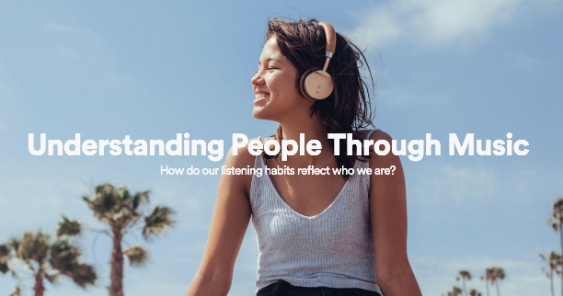When Should You Reach Out to Your Target Audience?
Music as we know it, is weaved into our everyday lives. There is a song (or a playlist) to represent each moment of our lives. These moments can be as simple as having a shower before heading to work or preparing for a night out in town. Music reflects who we are, what we are doing and how we are feeling in any given moment. And thanks to music streaming services, people are listening to music and amplifying these moments more than ever.
According to Spotify, music streaming habits are unique to this new way of listening. Understanding people through music, a recent research initiative has become a key part of Spotify’s data mission. The theory behind the work: because music listening is so uniquely emotional, universal and, now, addressable thanks to streaming, it can uncover deeper insights than consumption of other kinds of content like movies and TV.
As everyone has different music taste and preference, what is listened to is tied to who they are as a person, how they are feeling, where they’ve been, and what they have experienced. Given that people are engaged with Spotify throughout the day, the music streaming company has the opportunity to understand these things. In the Philippines, Spotify users spend on average 154 minutes per day on the app.

Why Does Spotify’s Streaming Intelligence Matter to Your Brand?
By analyzing how over 140 million people listen on Spotify, Spotify is able to understand how their streaming habits relate to what they’re like offline; from their personality traits and brand sentiments to their purchase behaviors.
Consider these early findings as the newest ingredient in Spotify’s streaming intelligence; an overall understanding of a brand’s audience, enabling you to reach them in the right context, with the right message.
Based on the data, Spotify has identified three different streaming habits:
• Discovery – measures how much people seek out unfamiliar music.
• Diversity – measures the range of music people listen to.
• Tilt – measures how actively people curate their streaming experience.
From these categories, users are further categorized into specific types of listeners they are. For example, users who stream music in the background are known as “Easy-Goers”, while those who may not have a specific taste in music are known as “Eclectics”. From there, each type of listener is matched to an action they are most likely to do as a consumer.
These habits tell a story about a listener; it is more than just who their favorite artist is but it is a reflection of their taste and values, thought patterns and views. Spotify is using these observations to learn and cultivate profiles for targeted advertising and in a more seamless listening experience.
How Does Spotify’s Streaming Intelligence Connect with Your User’s Consumption Habits?
Millennials love personalized music experiences such as Discover Weekly, and they appreciate ads that match their interests. Therefore, your message to them has to be targeted and personalized. As we delve further into this audience segment, and understand how they stream on Spotify, we are able to tell the type of listeners they are: Reliables, Eclectics and Curators.
Reliables are constantly streaming music that they already know and love. They are reliable streamers, who are constantly listening to music. They are also seen as being more responsive to brands and advertising. Based on the initial set of results, Reliables are 22% more likely to have liked, commented or tagged an ad on social media and 22% more likely to have recommended a brand or company to a friend.
On the other hand, Eclectics are users who are not tied to a specific music taste, instead they enjoy listening to a variety of different genres and sounds. As they are seen as heavier entertainment consumers, 15% of them are more likely to say they’re usually among the first of their friends to watch new movies/series.
Just as the name suggests, Curators enjoy curating their own playlists; have Spotify in the foreground more often; and manually take control of their listening. For these individuals, music plays an important role in their daily lives. Curators are 55% more likely to listen to music while riding public transportation; 30% more likely to listen to music while running errands; and are 28% more likely to listen to music while getting ready for a night out.
This is just a snapshot of what the research is able to provide as you work on your people-based marketing strategy. Within this one segment there are multiple ways a brand is able to target and engage with their audience; and this is made possible by understanding your consumer through the music they stream. Music is truly a mirror, as it reflects the true feelings and mindsets of its listeners.
To complement this research, Spotify introduced a new tool, Spotify.me, which uses streaming intelligence to reveal users their top tracks and artists; it also shows if the user is musically diverse or loyal, while finding patterns when and how users typically stream on Spotify.
For more information on this or on other segments (i.e. fitness enthusiasts, party goers, etc.), please visit https://spotifyforbrands.com/ph/ or reach out to our local Spotify representative at ph-sales@spotify.com.









